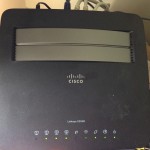 The lovely people at RiskAnalytics provide lists of domains known to serve malware at http://www.malwaredomains.com/. It makes these available in several formats including DNS zone files. They don’t even charge for the service which is, frankly, awesome!
The lovely people at RiskAnalytics provide lists of domains known to serve malware at http://www.malwaredomains.com/. It makes these available in several formats including DNS zone files. They don’t even charge for the service which is, frankly, awesome!
Many people configure their DNS servers so that they spoof the zone for each domain such that traffic is redirected to 127.0.0.1 (i.e. your own machine). This effectively stops hosts on that network from connecting to those zones and downloading unpleasant stuff. However, if you’re running a local webserver, say for development purposes, things can get confusing very quickly!
An alternative is using a DNS Response Policy Zone. This requires BIND version 9.8 or greater (or another DNS server that supports RPZ). RPZs are much more flexible than the approach above because they give us finer control over what we want the DNS server to tell the client. I have taken the approach that returning NXDOMAIN is the cleanest way of blocking traffic to these domains because a web browser will immediately give up on receiving that response. There’s no need to worry that a local webserver might interfere with domain blocking.


